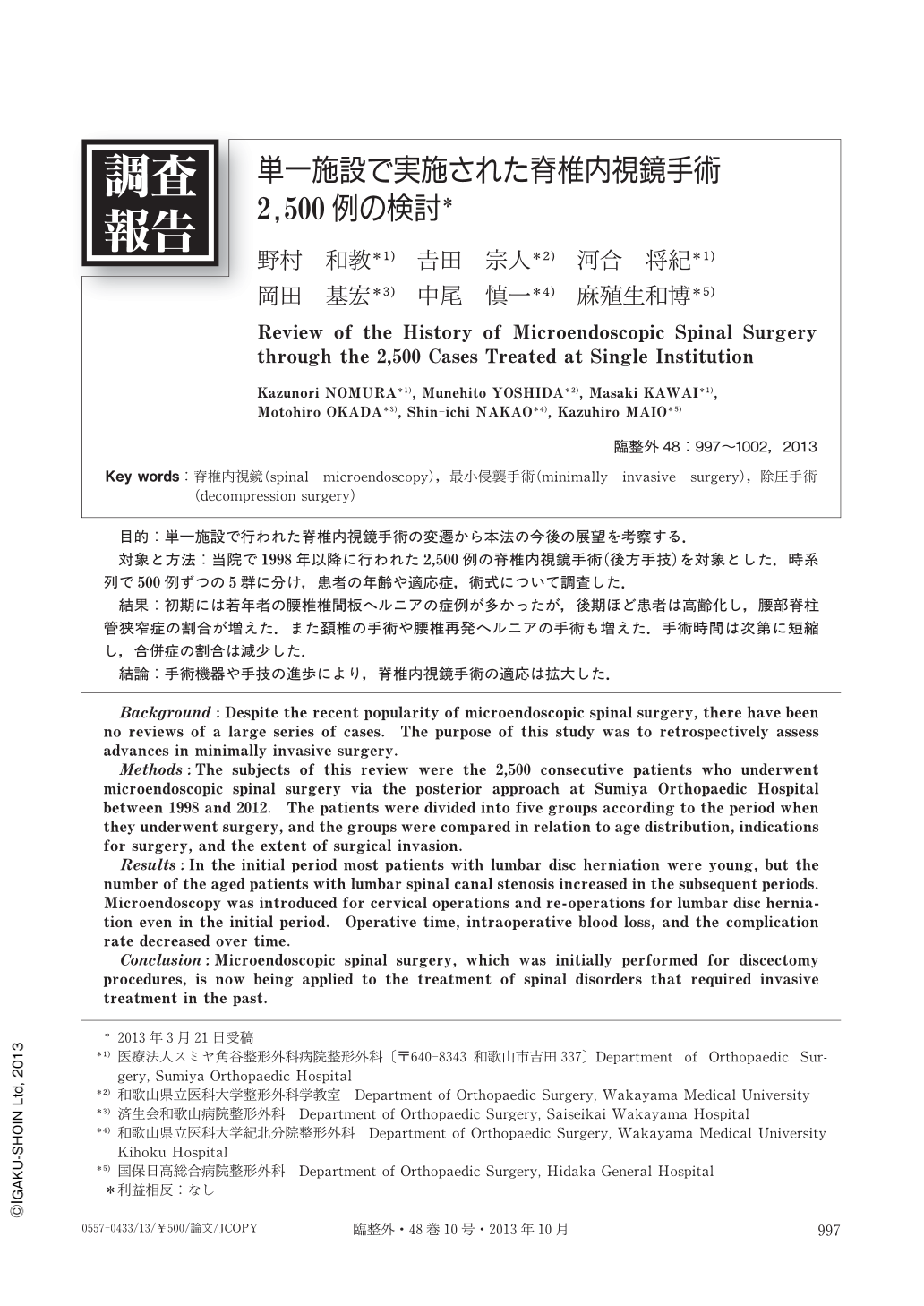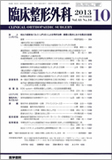Japanese
English
- 有料閲覧
- Abstract 文献概要
- 1ページ目 Look Inside
- 参考文献 Reference
目的:単一施設で行われた脊椎内視鏡手術の変遷から本法の今後の展望を考察する.
対象と方法:当院で1998年以降に行われた2,500例の脊椎内視鏡手術(後方手技)を対象とした.時系列で500例ずつの5群に分け,患者の年齢や適応症,術式について調査した.
結果:初期には若年者の腰椎椎間板ヘルニアの症例が多かったが,後期ほど患者は高齢化し,腰部脊柱管狭窄症の割合が増えた.また頚椎の手術や腰椎再発ヘルニアの手術も増えた.手術時間は次第に短縮し,合併症の割合は減少した.
結論:手術機器や手技の進歩により,脊椎内視鏡手術の適応は拡大した.
Background:Despite the recent popularity of microendoscopic spinal surgery, there have been no reviews of a large series of cases. The purpose of this study was to retrospectively assess advances in minimally invasive surgery.
Methods:The subjects of this review were the 2,500 consecutive patients who underwent microendoscopic spinal surgery via the posterior approach at Sumiya Orthopaedic Hospital between 1998 and 2012. The patients were divided into five groups according to the period when they underwent surgery, and the groups were compared in relation to age distribution, indications for surgery, and the extent of surgical invasion.
Results:In the initial period most patients with lumbar disc herniation were young, but the number of the aged patients with lumbar spinal canal stenosis increased in the subsequent periods. Microendoscopy was introduced for cervical operations and re-operations for lumbar disc herniation even in the initial period. Operative time, intraoperative blood loss, and the complication rate decreased over time.
Conclusion:Microendoscopic spinal surgery, which was initially performed for discectomy procedures, is now being applied to the treatment of spinal disorders that required invasive treatment in the past.

Copyright © 2013, Igaku-Shoin Ltd. All rights reserved.


